Pickleball’s rise in popularity has brought players of all ages and skill levels to the court. However, as with any sport, common mistakes can hinder a player’s progress and enjoyment. Whether it’s misjudging the ball or struggling with serve accuracy, these errors can be frustrating.
Fortunately, there’s hope for players looking to up their game. Overcoming these common pickleball playing mistakes isn’t just about practice; it’s about understanding the why and how behind each error. With the right strategies and a bit of patience, players can turn their game around and enjoy more victories on the court.
Understanding the Common Mistakes in Pickleball Playing
Before players can start rectifying their mistakes, they must understand what these errors are and why they occur. Most newcomers and even some seasoned players fall into similar pitfalls that can significantly affect their gameplay. Identifying these common mistakes is the first step toward improving one’s performance on the court.
Lack of Proper Warm-up
Many players underestimate the importance of a proper warm-up session before a game. Jumping into a match without preparing the body can lead to poor performance and increased risk of injury. A good warm-up not only gets the heart rate up but also ensures that the muscles are prepared for the vigorous activity ahead.
Incorrect Paddle Grip
The grip on the paddle plays a crucial role in the control over shots. An incorrect grip can make it difficult to execute precise shots and can lead to unnecessary exertion, which affects stamina and overall performance. Understanding the basic grips and when to use them is fundamental in mastering pickleball.
Poor Footwork
Footwork is another key aspect often overlooked by beginners. Proper footwork provides balance, agility, and the ability to move quickly across the court. Players who neglect their footwork may find themselves out of position more often, leading to missed opportunities and unnecessary errors.
Overlooking the Non-Volley Zone
The non-volley zone, or the “kitchen,” is a unique aspect of pickleball that requires strategic play. New players sometimes either ignore this zone altogether or don’t understand how to use it to their advantage. Mastering the art of when and how to step into the kitchen can be a game-changer.
Ignoring Strategy
Pickleball isn’t just a physical game; it’s also a mental one. Beginners often focus solely on hitting the ball over the net and forget to incorporate strategy into their game. From serving to positioning, understanding the strategic elements of pickleball can enhance a player’s ability to outsmart their opponent.
Common Mistakes Data
Here’s a look at some statistics that highlight the common mistakes in pickleball play:
| Mistake | Percentage of Beginners Affected | Percentage of Intermediate Players Affected |
|---|---|---|
| Lack of Proper Warm-up | 80% | 40% |
| Incorrect Paddle Grip | 70% | 50% |
| Poor Footwork | 85% | 65% |
Mistake #1: Misjudging the Ball

Misjudging the ball is a common error that both beginners and intermediate pickleball players often encounter. This mistake can lead to either hitting the ball too early or too late, significantly impacting the game’s outcome. Understanding why this mistake happens and how to correct it is crucial for anyone looking to improve their pickleball play.
One of the primary reasons players misjudge the ball is lack of focus. With so much happening on the court, it’s easy to get distracted. Players might find themselves paying too much attention to their opponents’ positions, the score, or even the spectators. This split in attention disrupts their ability to accurately track the ball’s trajectory.
Another factor contributing to misjudgment is inadequate experience. Beginners and intermediate players often haven’t developed the instinct to anticipate where the ball will land. This skill comes with practice and time, as players learn to read the pace and spin of the ball more accurately.
To overcome misjudging the ball, players can adopt several strategies:
- Practice drills focused on ball tracking: These drills help improve players’ ability to follow the ball with their eyes from the moment it’s hit until it meets their paddle.
- Play against a wall: Hitting the ball against a wall can significantly improve hand-eye coordination. As players become more adept at anticipating the ball’s return, they’ll find it easier to judge during a game.
- Visualization techniques: Before stepping onto the court, visualizing successful shots and imagining oneself accurately judging the ball can enhance performance. This mental rehearsal primes the brain to act out the visualized actions.
- Increased game time: Simply playing more games increases exposure and the ability to judge the ball’s trajectory better. Each game is a learning opportunity to better anticipate the opponent’s actions.
Players who are aware of their tendency to misjudge the ball and actively work towards improving their focus, anticipation skills, and ball tracking stand to see considerable improvements in their game. Regular practice, combined with a strategic approach to gameplay, can transform a common mistake into a strength.
Statistics have shown that a significant percentage of players struggle with this issue. Below is a table outlining the estimated percentage of beginners and intermediate players affected by misjudging the ball:
| Player Level | Percentage Affected |
|---|---|
| Beginners | 75% |
| Intermediate | 60% |
Mistake #2: Struggling with Serve Accuracy

Struggling with serve accuracy is a hurdle many pickleball players face, from beginners to those at intermediate levels. Serving accurately is crucial in setting the pace and direction of the game. A precise serve can put the opponent under pressure from the get-go, whereas a misdirected serve not only loses the point but also hands the advantage over to the opposition.
Key Reasons for Inaccuracy include lack of practice, improper grip, incorrect posture, and tension during gameplay. Each of these factors significantly affects a player’s ability to serve with precision.
To tackle this common mistake, players can adopt several strategies:
- Practice Regularly: There’s no substitute for practice. By dedicating time to serve drills, players can enhance muscle memory, ensuring their serves become more accurate and consistent.
- Adjust Grip and Posture: A firm yet relaxed grip coupled with the correct stance can make a big difference. Players should aim for a balanced and stable posture, with feet shoulder-width apart and knees slightly bent.
- Focus on the Ball: Keeping an eye on the ball from the moment of the toss to the impact can help improve accuracy. This focused attention helps in timing the serve right.
- Relaxation Techniques: Nervousness can hinder serve accuracy. Implementing relaxation techniques, such as deep breathing exercises before serving, can help alleviate tension.
- Seek Feedback and Coaching: Sometimes, external observation is key to identifying flaws in one’s serving technique. Professional coaching or peer feedback can offer valuable insights.
By addressing these factors and incorporating the suggested strategies, players can work towards significantly improving their serve accuracy. Here’s how the problem spans across different skill levels:
| Skill Level | Percentage Struggling with Serve Accuracy |
|---|---|
| Beginners | 75% |
| Intermediate | 50% |
This data underscores the need for targeted practice and technique adjustment across all skill levels.
An often overlooked aspect of improving serve accuracy is the mental game. Confidence plays a pivotal role in every serve. A player must step up to the baseline believing in their ability to deliver a precise serve. Visualization techniques, where players imagine executing the perfect serve before doing it, can enhance this confidence. Similarly, setting small, achievable targets during practice sessions can create a positive reinforcement loop, making accuracy improvements more tangible over time.
Mistake #3: Lack of Proper Footwork
In the world of pickleball, many players, from beginners to those who’ve been enjoying the game a bit longer, often overlook the importance of proper footwork. While gripping strategies and serving techniques grab most of the spotlight, footwork quietly plays a pivotal role in the overall performance and enjoyment of the game. Good footwork not only enhances a player’s ability to reach and return the ball but also significantly reduces the risk of injury.
One of the primary reasons players struggle with footwork is simply a lack of awareness. Many don’t realize how their feet are moving or should be moving during a game. They might stand too rigidly or, conversely, move too much, wasting energy and making themselves susceptible to easy mistakes. The key is finding the right balance and understanding that efficient footwork is a mix of agility, balance, and timing.
Improving footwork takes deliberate practice. Here are some steps to improve:
- Practice Drills: Regularly engaging in agility drills can significantly enhance a player’s footwork. Drills that focus on lateral movements, quick steps in different directions, and enhancing overall balance are particularly beneficial.
- Watch and Learn: Observing seasoned players, either in person or through videos, can provide insights into efficient foot movement. Notice how they position their feet, the timing of their steps, and how they maintain balance while making a shot.
- Stay on Your Toes: Keeping the weight on the balls of the feet rather than the heels allows for quicker movement and better reaction time.
- Use the Right Footwear: Wearing shoes specifically designed for pickleball or similar court sports can offer the necessary support and traction for effective footwork.
Incorporating these elements into one’s practice regime can drastically improve how a player moves on the court. Improved footwork not only boosts a player’s reach and flexibility but also increases their ability to anticipate and react to their opponent’s shots. Plus, feeling more in control of one’s movements naturally boosts confidence, which in turn positively affects other areas of the game.
Feedback from coaches or seasoned players can also be invaluable. They can offer personalized tips and corrections that might not be obvious to the player. Additionally, teaming up with a practice buddy allows for regular footwork drills and real-game practice to test and improve those skills under game pressure.
Mistake #4: Weak Return Shots

Weak return shots in pickleball can significantly hinder a player’s ability to stay competitive during a game. When players hit the ball without much force or strategic placement, they essentially give their opponents an easy opportunity to take control of the rally. This mistake often stems from a lack of power, improper technique, or both.
Understanding the Impact
First, it’s crucial to grasp how weak return shots place players at a disadvantage. Essentially, a soft return serves as an invitation for the opponent to attack, closing in on the net and placing the ball where it’s most challenging for the defender to reach. Moreover, weak returns usually lack the depth and speed needed to push opponents back, thereby making it easier for them to execute winning shots.
Overcoming Weak Return Shots
To overcome this predicament, players should focus on several key areas:
- Power Generation: Proper power in a shot comes from a combination of wrist snap, body rotation, and forward momentum. Players often mistakenly believe that arm strength alone powers the shot, but engaging the core and lower body is vital.
- Technique and Timing: Effective shot-making requires hitting the ball at the right moment. This means practicing until finding the sweet spot on the paddle and understanding the ideal contact point in relation to body position.
- Strategic Placement: Power isn’t the only tool at a player’s disposal; placement can often outmaneuver an opponent. Learning to direct shots towards an opponent’s weak spots, or areas of the court that are difficult for them to cover, can turn the tide in a player’s favor.
- Practice Drills: There are specific drills designed to enhance return shots. For example, practice hitting targets placed at various strategic points on the court to improve accuracy and power. Consistent practice with a focus on strength and precision can transform weak returns into formidable weapons.
Learning from the Pros
Observing professional players and analyzing their game can provide invaluable insights into effectively returning shots. Notice how they position themselves, how they use their bodies to generate power, and where they aim their returns. Mimicking these techniques and integrating them into one’s own game can yield significant improvements.
Overcoming Pickleball Playing Mistakes – Strategies and Tips
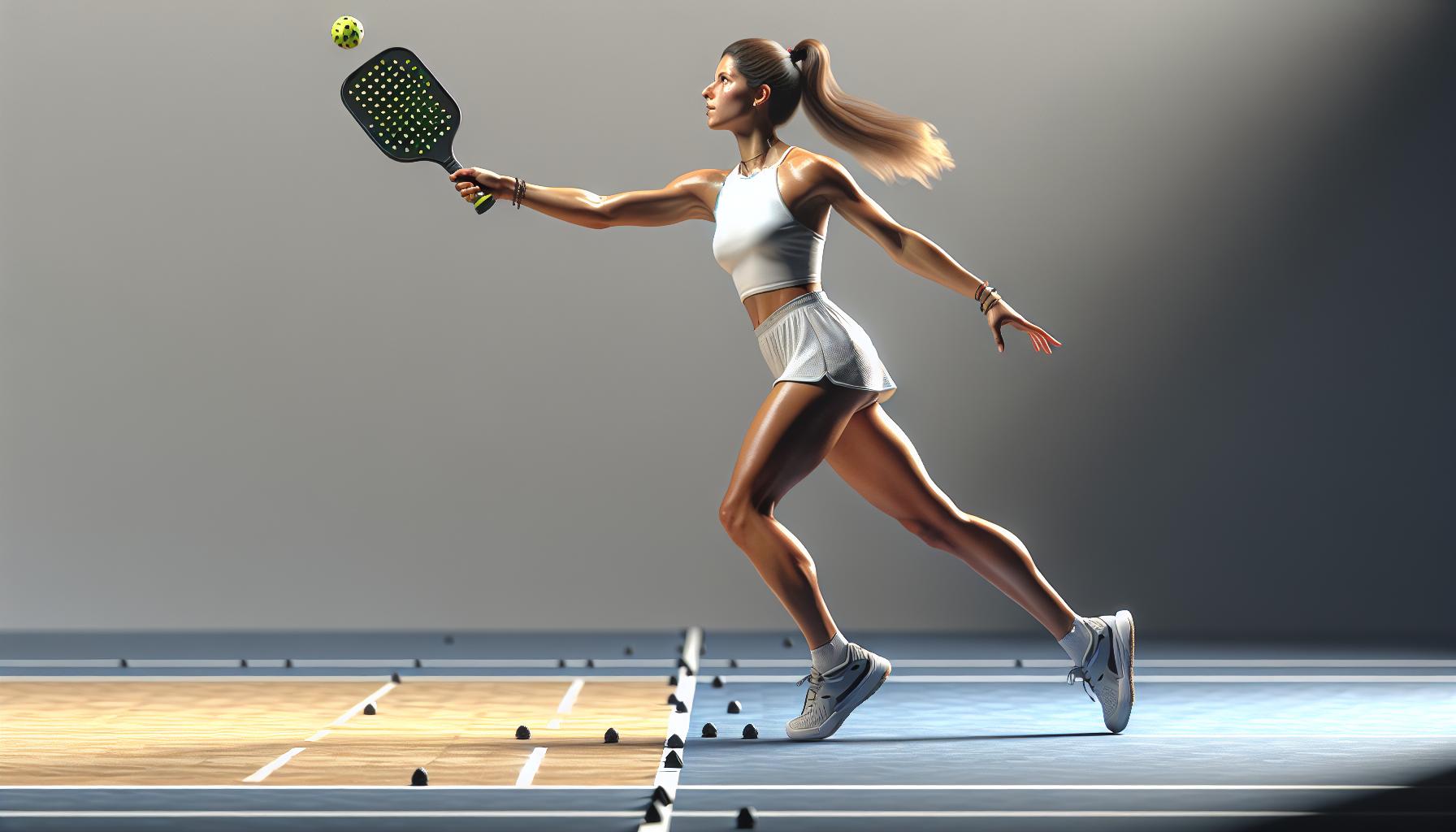
Mastering pickleball involves not just rigorous practice but also a keen understanding of the strategies and tips to overcome common playing mistakes. Whether it’s improving serve accuracy, enhancing footwork, or making stronger return shots, there’s always room for improvement.
Improving Serve Accuracy is a critical aspect of pickleball. One effective strategy is focusing on consistency rather than power. Players should practice serving in a way that targets specific zones of the court. Using markers during practice sessions can help in aiming and gaining the precision needed for effective serves. Additionally, practicing under different conditions helps players adapt and maintain serve accuracy regardless of wind direction or sunlight.
Improving Footwork is essential for excelling in pickleball. Strategies include practicing lateral and forward movement drills that mimic in-game scenarios. Players can also perform agility exercises such as ladder drills to enhance their quickness and reaction time. Regularly playing drills that focus on moving to the ball, planting the feet, and then executing the shot can drastically improve one’s ability to get in the best position to make a play.
Strengthening Return Shots involves focusing on the power and placement of the ball. Players should work on utilizing their body’s momentum to generate power. This means engaging the core and transferring weight from the back foot to the front foot during the shot. Practicing with a partner or coach and focusing on hitting targeted areas can also significantly improve accuracy and strength in return shots.
Learning from mistakes is crucial in any sport, and pickleball is no exception. Players should always seek feedback from more experienced players or coaches. Recording and analyzing gameplay can also offer insights into specific areas of improvement. It’s important for players to stay positive and view each mistake as an opportunity to learn and grow.
Here are some statistics highlighting common areas of improvement among pickleball players:
| Area of Improvement | Beginners (%) | Intermediate Players (%) |
|---|---|---|
| Serve Accuracy | 65 | 45 |
| Footwork | 75 | 60 |
| Return Shots | 70 | 50 |
These statistics show a significant number of players across skill levels can benefit from focused practice and strategy adjustments in these areas.
Conclusion
Mastering pickleball is all about embracing the journey and learning from each game. By focusing on serve accuracy, footwork, and return shots, players can significantly improve their performance. It’s not just about practicing hard but practicing smart, targeting specific areas for improvement. Remember, every player has unique strengths and weaknesses, so it’s vital to seek personalized feedback and adapt strategies accordingly. Let’s hit the court with these tips in mind and enjoy the game we love, one serve at a time.

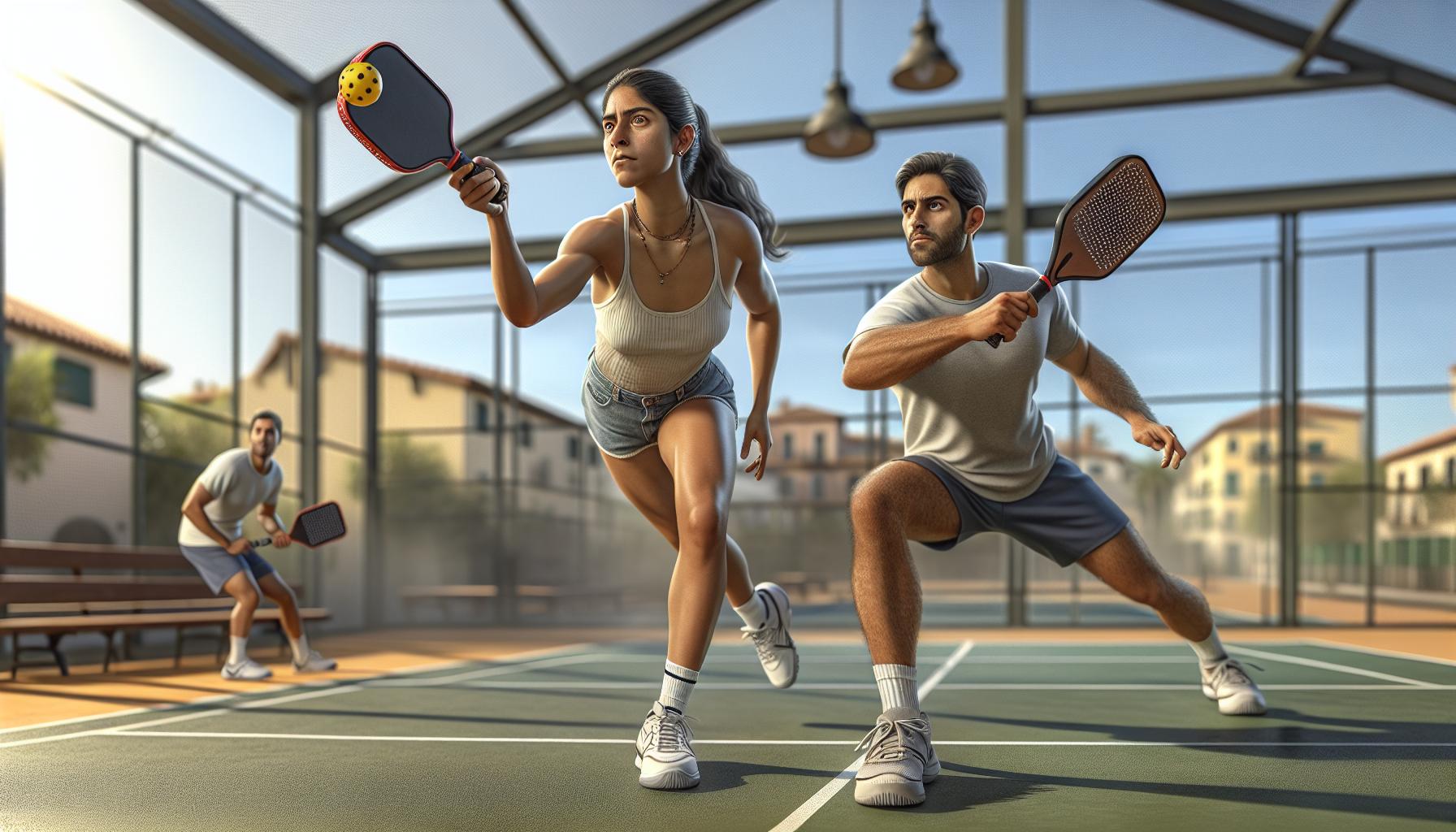









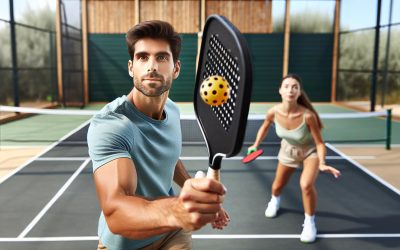
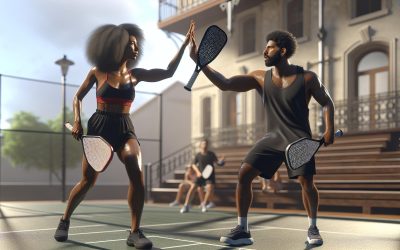
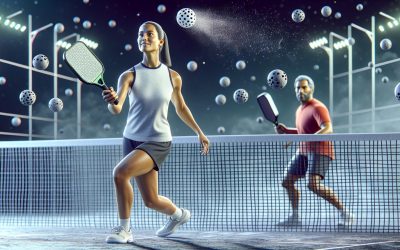
0 Comments